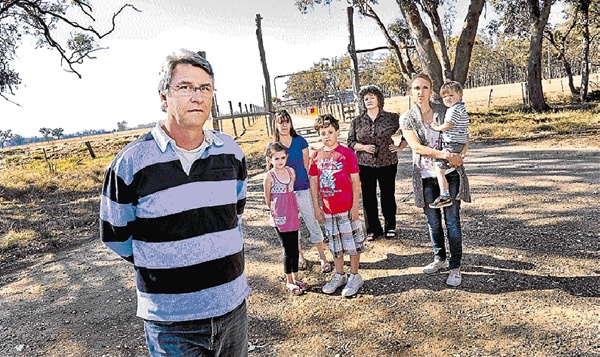FOUL-smelling waste from a wool processing factory in Long Forest must be removed by Anzac Day after locals voiced concerns over chemicals contained in the “stinky slush”.
Moorabool Council gave Victoria Wool Processors, the country’s biggest domestic wool processor, 21 days from April 4 to remove the waste, yet locals say they reported the issue to the Environment Protection Authority and council more than six months ago.
Moonah Drive resident Bill, whose home backs on to the site, said he woke up to a daily smell “like putting your head into a blood and bone bucket”.
“This has been a problem for 18 months and we notified council and the EPA in September, but they have shifted the blame back and forth.”
He said the “sludge” was composed of wool-scouring waste.
“It’s been washed and combed with by-product – grease and highly polluted water. The worst is the mud or ‘sludge’, a really thick product, full of dirt and chemicals and crap surrounding the bums of sheep.
“That sludge can be composted successfully – but it’s questionable whether it is safe during the composting process.
It stinks, you feel sick if you go outside; we’re about 800 metres from the actual place where composting is occurring and when they turn it, it’s rife here. As soon as night falls, it settles and stays.”
An EPA spokesman said that due to the smaller size of the site, the matter should be investigated by council.
However in January, after receiving complaints, the EPA attended the site.
“Officers observed composting piles on site which were made up of scouring waste – waste from the process of washing wool fleeces – in various stages of composting. The site operator reported that the piles were turned to obtain correct temperatures,” the spokesman said.
He added that a works approval/licence would be required if the capacity of material received and processed at the site exceeded the 100-tonne per month threshhold, but the site currently receives only 70 tonnes per month.
“The council’s planning requirements would, in the first instance, ensure this type of operation was established at an appropriate location – and secondly, identify a buffer distance to ensure that this operation causes minimal impact on the neighbours.
“EPA has advised the operator that composting of this waste at an alternative and appropriate location is preferable to depositing the wastes to landfill.”
Council spokesman Phil Weir said although it had referred the matter to the EPA, it was now regularly visiting the site and liaising with the company’s management.
“The material on the site is industrial waste, not a prescribed waste. The EPA has advised that this material can be legally spread as compost. However, the waste matter on the site cannot be spread and is to be removed from the site no later than 25 April.”
The Laverton North-based company owns the land at 594 Long Forest Road, which is next to a nature conservation reserve and has streams running through it into a catchment.
General manager David Ritchie said the land was zoned as general faming land and the soil transported to the site had been tested independently and confirmed to be suitable as a replacement for fertiliser on agricultural land.
“The test results have been supplied to the EPA and they have indicated they have no concerns [about] material used on site.
We have agreed to stop doing it until we go back to council to get around the misinformation that’s there.”
He said the company was looking at overcoming the odour and changing the work practice.







